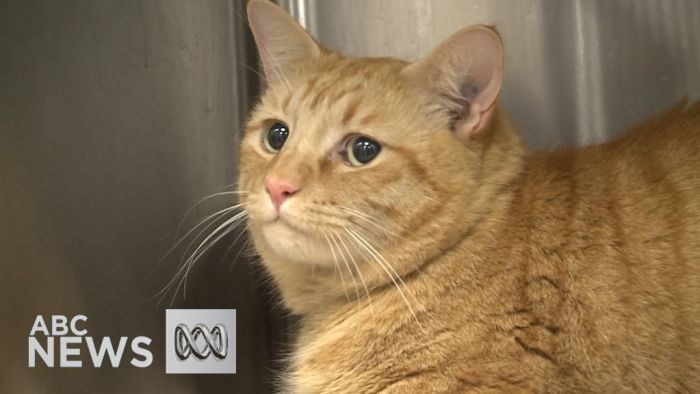Cat community blood bank set up as number of felines requiring transfusions rises
Posted
A Perth veterinary hospital has set up a community blood bank for sick cats, as the number of felines requiring blood transfusions continues to rise.
Just like humans, if cats lose blood due to trauma, become anaemic, undergo major surgery or get cancer, they can require a blood transfusion to survive.
The Animal Hospital at Murdoch University treats many critically ill cats at its emergency clinic and the availability of blood often determines whether the animal lives or dies.
Senior lecturer in veterinary emergency Dr Claire Sharp said the clinic decided to set up a community program to boost and safeguard its supplies.
"On a small scale we operate a facility like the Red Cross does for human medicine," Dr Sharp said.
"It's so important for our ability to care for critically ill cats and in the past we haven't always had the blood available when we need it. In an emergency we need to administer it rapidly.
"We don't have nearly as many cats as dogs on our blood donor list, and we go through that blood quite quickly."
 Photo:
Dr Dorian Lara and Dr Jill Griffiths extract blood from a cat at the Murdoch Animal Hospital. (Supplied: Murdoch University)
Photo:
Dr Dorian Lara and Dr Jill Griffiths extract blood from a cat at the Murdoch Animal Hospital. (Supplied: Murdoch University)
The facility is one of the first clinics in Western Australia to separate the cat blood into red blood cells and plasma using a centrifuge.
This allows the blood to be stored for longer, gives the sick cats exactly what they need in transfusions and is more in line with human standards of health care.
The clinic has now dedicated a part-time staff member to run a community outreach program in a bid to attract more donors.
Dog and cat blood donation has long been occurring around the country.
But with cats, the pool of donors is often made up with felines owned by veterinary staff and students.
"Back in the day and in a lot of smaller clinics, if a vet had a patient that needed a blood transfusion, they would often pop home and get their dog or cat, bring it in and collect a blood donation," Dr Sharp said.
Cat donors urgently needed to boost supplies
Unlike dogs who can give blood without being sedated, cats are not as cooperative and require anaesthesia.
"It involves dropping your cat off to us in the morning and collecting your cat at the end of the day," Dr Sharp said.
"Once we've got the IV in and we've given them some sedation, we clip a little patch of fur on their neck and a needle is inserted in and the blood donation is collected," she said.
"We give them some IV fluids and once they are awake and feeling well, we send them home again."
Cats have a variety of blood types and can donate every 10-12 weeks.
The average cat blood donation is 54ml or up to 20 per cent of their total blood volume.
Ideally, the cat donors need to be at least 5kg, healthy, fully vaccinated and between one and eight years old.
 Photo:
Kim Burke took her cat Harry to donate blood as a way of giving back to the clinic that saved his life. (ABC News: Laura Gartry)
Photo:
Kim Burke took her cat Harry to donate blood as a way of giving back to the clinic that saved his life. (ABC News: Laura Gartry)
Cat owner Kim Burke volunteered her 8-kilogram ginger rescue cat Harry for donations after nearly losing him to blood poisoning.
"I'd like to think that his blood can help Murdoch save other cats like Harry," she said.
"It's also been a great way to show our kids how blood donation can help others.
"Harry's donated once so far and we will donate again after 12 weeks. The recovery is fine and the cat doesn't suffer in any way."
The cats also get a free vet examination with every donation.
Topics: animals, perth-6000









